#ammonitida
Text

A young Duriavenator hesperis found the empty shell of a Garantiana sp. at the beach (Bajocian, 168 Ma, England).
#paleoart#palaeoart#art#dinosaur#dino#prehistoric#paleontology#palaeontology#digitalart#Duriavenator#Duriavenatorhesperis#Megalosaurinae#Megalosauridae#Theropoda#Theropod#Garantiana#Stephanoceratidae#Stephanoceratoidea#Ammonitida#Ammonoidea#Ammonite#Jurassic#paleoblr#palaeoblr#digital art
62 notes
·
View notes
Text
FOSSIL FRIDAY: LAST OF THE AMMONITES
Today will be the last of the ammonites, the order aptly named: ammonitida.

These ammonites spanned the Jurassic and Cretaceous Periods (and possibly the earliest Paleocene before they choked and went extinct.)

This order had the most complex sutures of all the ammonites, having branching saddles and lobes that resemble manganese dendrites.

Manganese Dendrites

Ammonitida sutures
I hope this month you have learned something new about ammonites and next month we will be looking at my favorite rock formation: the Morrison Formation!

18 notes
·
View notes
Photo
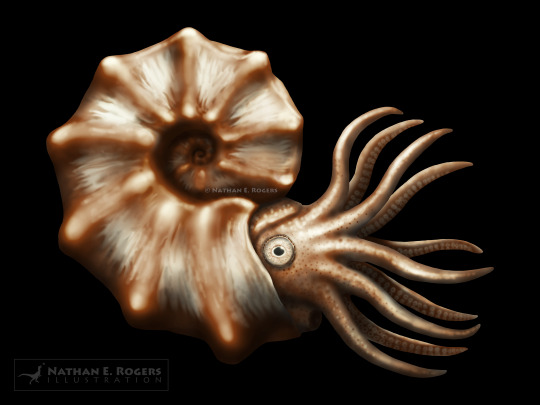
Mammites Ammonite
Late Cretaceous
I had the great opportunity to work on this image for the Mace Brown Museum of Natural History at the College of Charleston, SC, with guidance from paleontologist Dr. Scott Persons.
You can watch a virtual tour of the Museum's exhibits at:
https://www.youtube.com/watch?v=zNZ9NcUeXAA&list=PL4-bAC0oaWu445vvKgvIqIxP8OCndikoV
#natural history#science#paleontology#illustration#paleoart#Mammites#ammonite#Cretaceous#Acanthoceratidae#Cephalopod#mollusc#Ammonoidea#Ammonitida
69 notes
·
View notes
Text
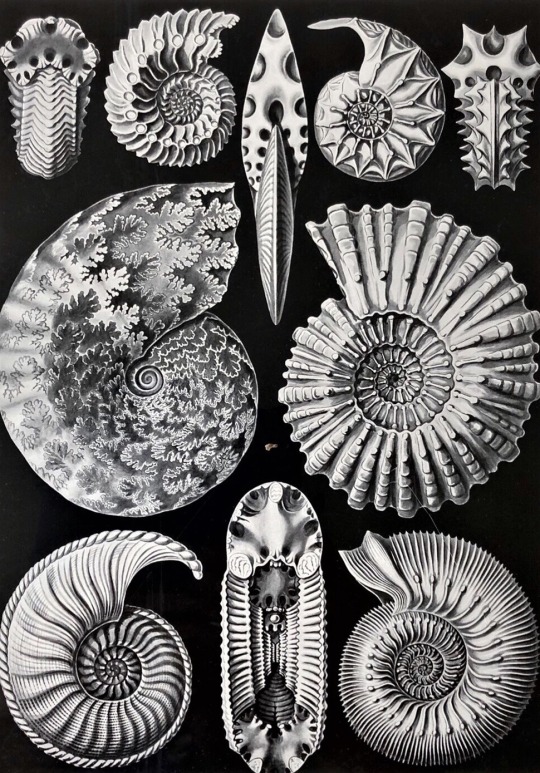
Ernst Haeckel 1834-1919 - Ammonitida
3 notes
·
View notes
Text
Parkinsonia sp. (Ammonite)
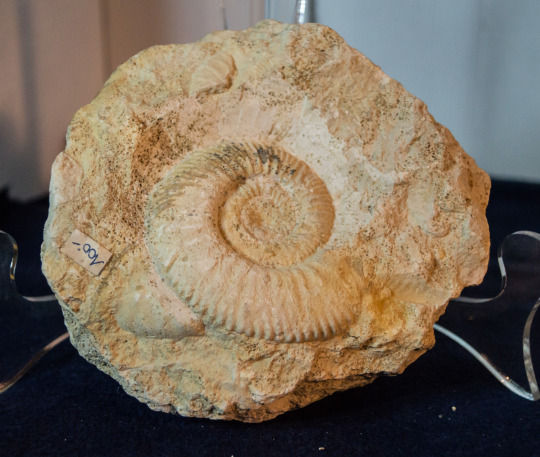


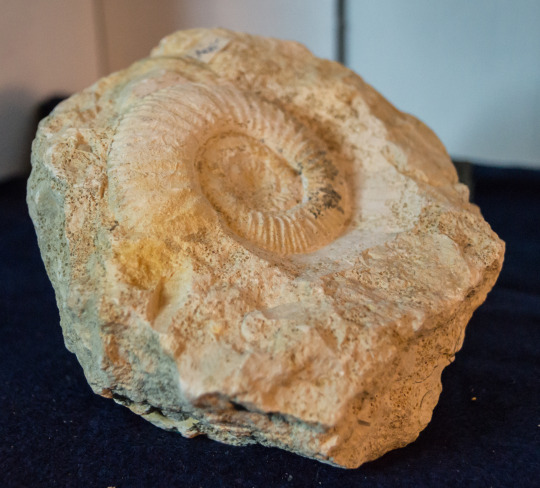

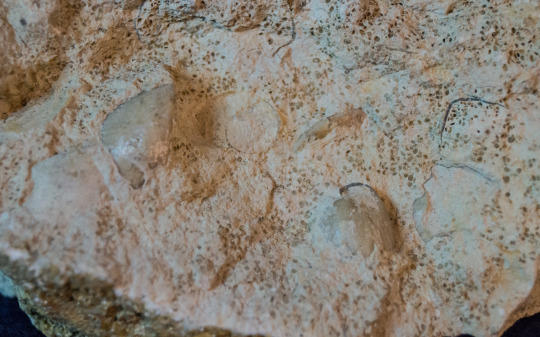
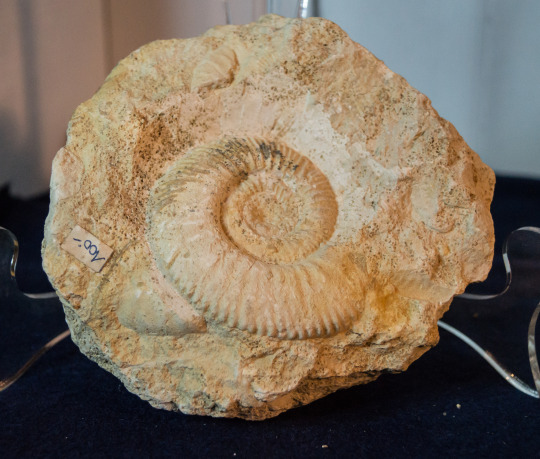
BB-F-0021
Location: Oiron, Deux-Sevres, France
130x123x65 mm / 1336g (Large Cabinet)
Species: Parkinsonia sp.
Genus: Parkinsonia
Order: Ammonitida
Class: Cephalopoda
Age: Bajocian / Bathonian
Epoch: Mid-Jurassic
Period: Jurassic
Era: Mesozoic
1 note
·
View note
Text


BENEFIT ART SALE: Buy an 8"x10" print of my drawings "Ammonitida" or "Camelops" for $25 minimum and I'll donate all proceeds (minus a few dollars in printing and shipping costs) to one of the following organizations! I can take Paypal or Venmo, and I'll provide receipts for the donations. Message me with your mailing address and preferred organization(s) if you're interested!
*Black Lives Matter Foundation (blacklivesmatter.com)
*Equal Justice Initiative (eji.org)
*NAACP (naacp.org)
*NAACP Legal Defense Fund (naacplegaldefensefund.org)
*ACLU (aclu.org)
*Women For Political Change (womenforpoliticalchange.org)
*Chicago Community Bond Fund (chicagobond.org)
*CDC Foundation's Emergency Response Fund (cdcfoundation.org)
*WHO's COVID-Solidarity Response Fund (covid19responsefund.org)
*CERF+ Response Fund to support artists affected by COVID-19 (cerfplus.org)
Help me support the BLM movement and COVID-19 relief, and get some art out of it while you're at it!
#art#artist#artwork#drawing#ink#fossil#fossils#fossilart#blm#justice#naacp#cdc#world health organization#equal justice initiative#silence is violence#no justice no peace#equal justice#black lives matter#covid 19#covid 19 relief#art for sale#prints for sale#artwork for sale#ink drawing#legal defense fund#bail fund#community bail fund#legal defense#protest#aclu
49 notes
·
View notes
Photo
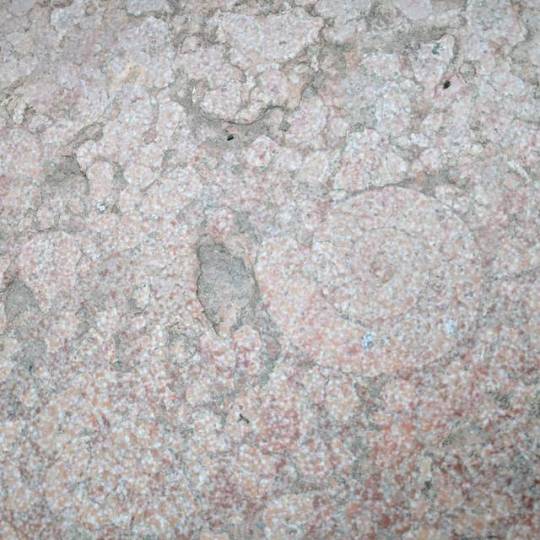
Gli #anziani del villaggio. Oggi ho trovato #Lusiana i residenti più antichi noti! ~100 milioni anni? #BuonCompleanno 🐌+🦑= #Ammonitida #VillageElders Today I found #Lusiana oldest known residents! ~100 million years old? #HappyBirthday #Ammonite #CretaceousPeriod #SquidSnail #OctoSnail #Ammonoid #Lusiana #SetteComuni #Altopiano7c #Fossil #Fossils (at Comune di Lusiana)
#anziani#fossil#fossils#ammonite#buoncompleanno#ammonoid#villageelders#happybirthday#cretaceousperiod#octosnail#lusiana#altopiano7c#squidsnail#settecomuni#ammonitida
0 notes
Text
THREE AMMONITES FOSSIL ROCK Fossils Sulawesi Relic Cephalopod Ammonite
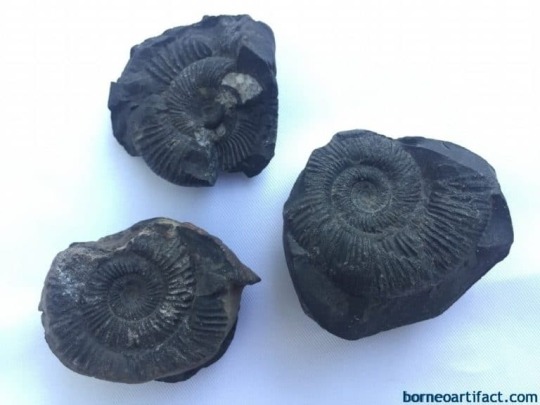
The closest living relative of the Ammonitida fossil rock is not the modern Nautilus. They somewhat outwardly resemble. Rather the subclass of octopus, squid, and cuttlefish.
Ammonites is specifically to the order Ammonitida. Therefore, it is an extinct group of marine animals belonging to the cephalopod subclass Ammonoidea. However, they are excellent index fossil rock. Therefore, it is often possible to link the rock layer in which they are found, to specific geological time periods.
Across: 6 - 6.5 cm / 2.4 - 2.6 inches
Weight: 0.3 kg / 0.66 lb
Shipping by courier.
Shipping delivery and handling duration 8 to 10 working days.
Read the full article
0 notes
Photo


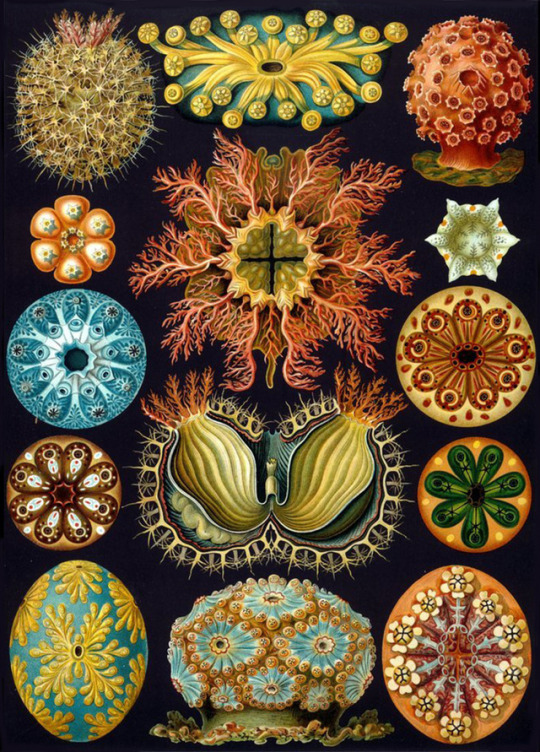
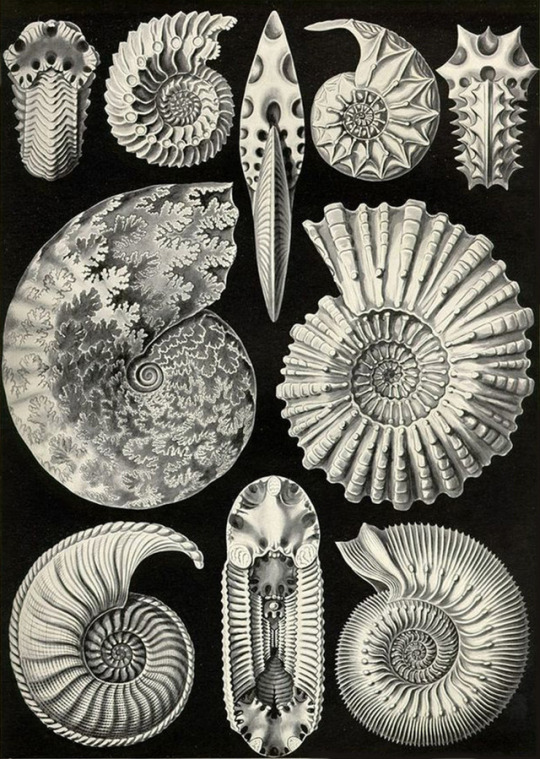
“Kunstformen der Natur”, Ernst Haeckel (1904)
“Tafel 53 — Murex. Prosobranchia”
“Tafel 42 — Ostracion. Ostraciontes”
“Tafel 85 — Cynthia. Ascidiae”
“Tafel 44 — Ammonites. Ammonitida”
Book in PDF here
1 note
·
View note
Photo

19 Geological Specimens Found In Poland
Warsaw, 2017
11. Procerites sp. ammonite
period: Middle Jurassic – Bathonian (166.1-168.3 million years ago)
excavation site: Gnaszyn near Częstochowa (Kraków-Częstochowa Upland)
Ammonites are extinct organisms which belong to the most evolved group of mollusca – cephalopods. Ammonitida, to which Procerites belong, emerged at the turn of the Triassic and Jurassic periods. They used to live in loamy sediments, away from the marine coast. Ore-bearing loams containing iron, in clay pit of Gnaszyn brickfield, are abundant in fossils of this kind. The smallest ammonites measured about 1 cm, but the diameter of the largest specimens was up to 2 metres wide (the biggest specimen found in Poland measures 1.5 m). They became extinct due to the same reasons as dinosaurs – as a result of catastrophic environmental changes probably triggered by the hit of meteorite at the end of the Cretaceous.
The piece comes from the collection of Geological Museum of the National Geological Institute – National Research Institute.
0 notes
Text
Crioceratites duvali (Ammonite)
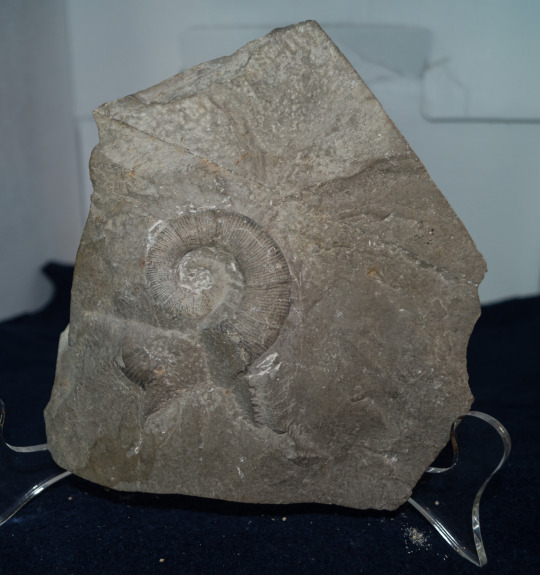


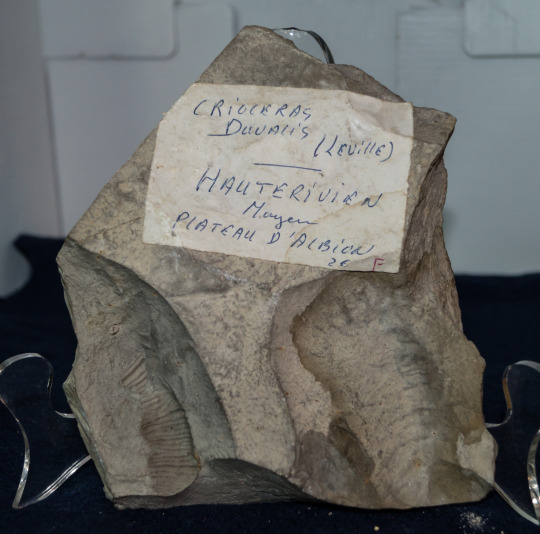
BB-F-0030
Location: Plateau d'Albion, Alpes-de-Haute-Provence, France
157x156x38 mm / 996g (Large Cabinet)
Species: Crioceratites duvali
Genus: Crioceratites
Order: Ammonitida
Class: Cephalopoda
Age: Hauterivian
Epoch: Early-Creraceous
Period: Cretaceous
Era: Mesozoic
0 notes
Photo

Name: Scaphites arcadiensis
Location: Texas, USA, Eagle Ford Formation
Age: 89-100 million years ago, Cretaceous Period
After 150 years, scientists continue to argue about where individuals of Scaphites, with their shells shaped like coat hooks, could have thrived in the ocean. Whether they trolled the seafloor, fed on plankton near the surface, swam somewhere in between, or a combination of all three, is a debate.
One problem keeping the mystery unsolved is that nothing alive today looks like Scaphites. Living relatives either have wheel-shaped shells, grow the remains of shells deep inside their soft bodies, or have no shells at all.
Without living analogues to compare, scientists use engineering principles and chemical evidence to narrow the range of places where Scaphites could have lived.
To some, the hook shape makes the most sense for a life near the sunlit ocean surface. Others argue that spines on individuals of some species and the placement of muscle scars indicate a life near the seafloor. The composition of carbon atoms in the shells of some populations further support the idea that they lived close to methane seeps on the seafloor. Preserved jaws were used to support two different scenarios, both a bottom-living, shell-crushing life and a diet of tiny animals higher in the water column.
Another idea is that maybe they constantly changed water depth, like today’s Nautilus. Different sources of evidence interpreted by different researchers support different conclusions.
Specimen Number: BEG 19815
References:
Landman, Neil H., William A. Cobban, and Neal L. Larson. “Mode of life and habit of scaphitid ammonites.” Geobios 45(2012):87-98.
Monks, Neale. “Functional morphology, ecology, and evolution of the Scaphitidae Gill, 1871 (Cephalopoda).” Journal of Molluscan Studies 66(2000):205-216.
Monks, Neale, and Jeremy R. Young. “Body position and functional morphology of Cretaceous heteromorphy ammonites.” Palaeontologia Electronica 1.1.1A(1998):1-15.
Where are similar fossils found?
Bonus: One research team animated their hypotheses into a series of videos of how hook-shaped ammonoids might have swam.
#ammonoid#animalia#mollusca#cephalopoda#ammonitida#scaphitidae#scaphites#arcadiensis#usa#eagle ford formation#texas#cretaceous#paleontology#fossil#ammonite
4 notes
·
View notes
Photo

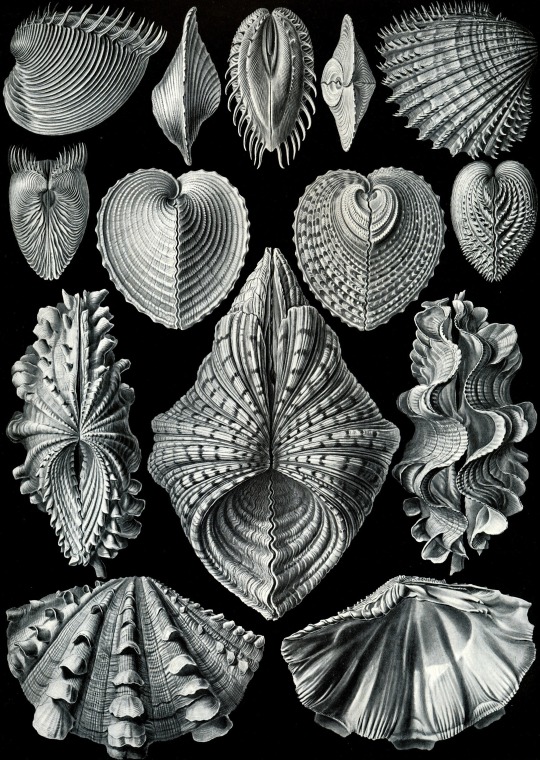

Ernst Haeckel, Kunstformen der Natur (Art Forms of Nature), 1904.
#Ernst Haeckel#Kunstformen der Natur#1904#Ammonitida#ammonites#Thalamphora#MagicTransistor#sea shells#the fossil record#ammonite forms#Ernst Haeckel Kunstformen der Natur 1904.#Art Forms of Nature#art#biology#nature#magic#Ernst Heinrich Philipp August Haeckel#lithograph#lithography#autotype
371 notes
·
View notes
Text
THREE AMMONITES FOSSIL ROCK Fossils Sulawesi Relic Cephalopod Ammonite
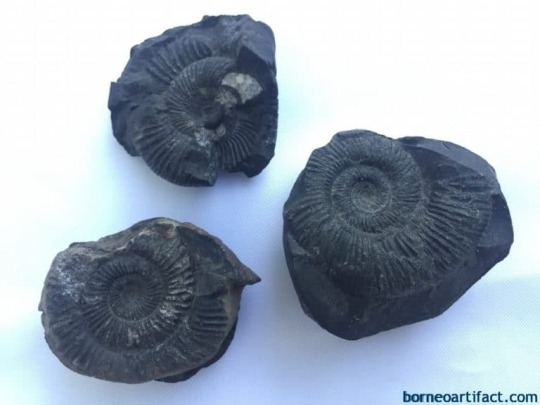
The closest living relative of the Ammonitida fossil rock is not the modern Nautilus. They somewhat outwardly resemble. Rather the subclass of octopus, squid, and cuttlefish.
Ammonites is specifically to the order Ammonitida. Therefore, it is an extinct group of marine animals belonging to the cephalopod subclass Ammonoidea. However, they are excellent index fossil rock. Therefore, it is often possible to link the rock layer in which they are found, to specific geological time periods.
Across: 6 - 6.5 cm / 2.4 - 2.6 inches
Weight: 0.3 kg / 0.66 lb
Shipping by courier.
Shipping delivery and handling duration 8 to 10 working days.
Read the full article
0 notes